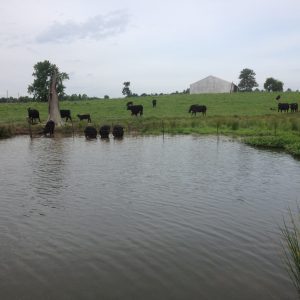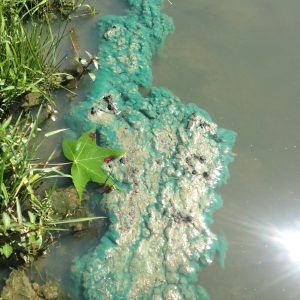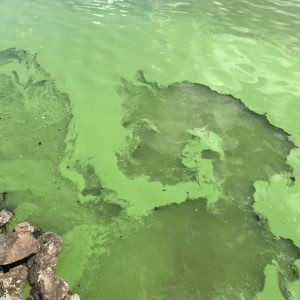Fish & Water

Water testing needs to be specific. It requires samples to be handled correctly and sent to the right personnel or laboratory for testing.
General Rules for Water Testing
- Call the testing facility or laboratory for instructions (many have specific procedures and sample containers).
- Use clean (well rinsed) plastic bottles (do not use prescription bottles).
- Collect undisturbed, clean water.
- The less air left in the sample container, the better.
- Be specific about the source being tested and why you want the water tested.
- Label sample containers with name, location, phone number, and email address.
- Avoid shipping late in the week or delaying dropoff. Fresh samples are best.
- Do not leave samples—even fresh samples—in direct sunlight or a hot car.
- Refrigerate samples if not dropped off immediately.
- If shipping, remember that leaky packages will not be delivered; the carrier will throw them out. Tighten and tape around the cap, place in a sealed gallon bag, and ship it in a box. Do not ship glass.
- Call your provider for public water supply test results. These water supplies are tested regularly.
Alkalinity & Hardness: Recreational Ponds
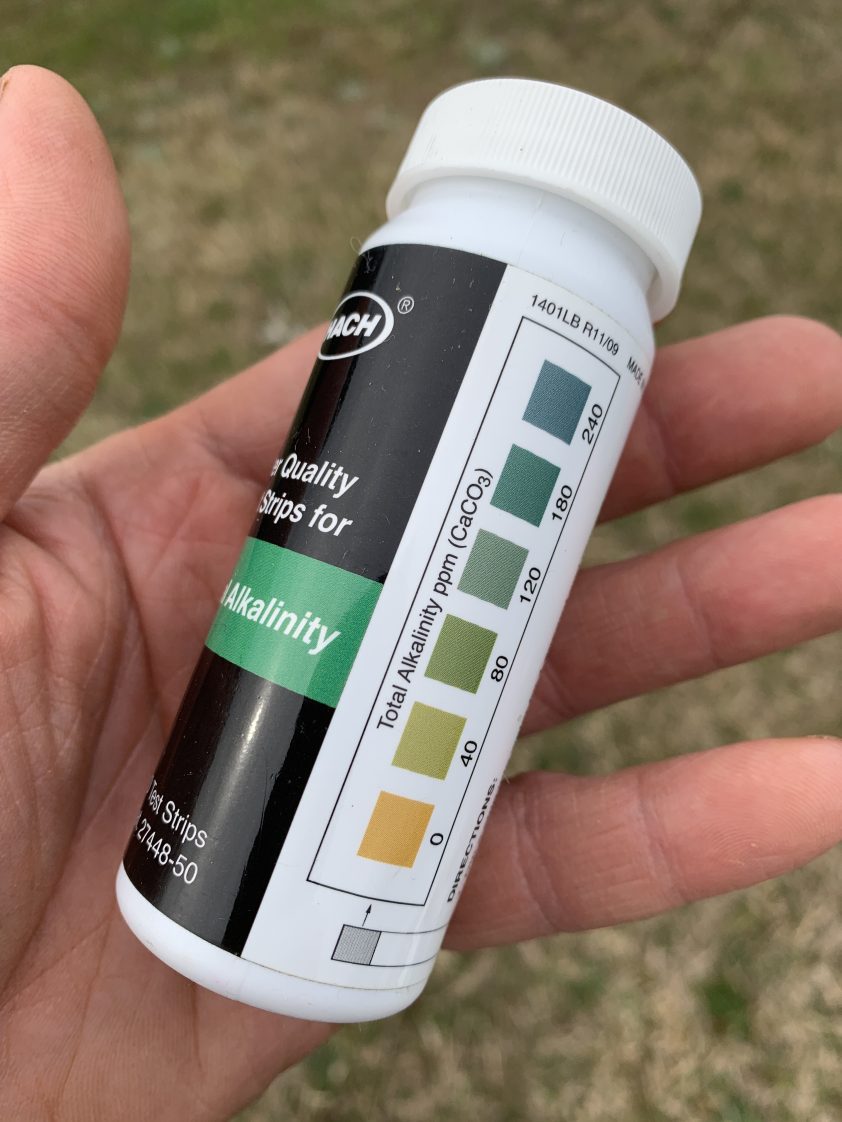
Figure 1. Simple pool test kits generally do not provide a fine enough scale to test pond water accurately.
Many waters in Alabama are acidic or low in alkalinity and hardness, a condition alleviated by adding calcium carbonate in the form of agricultural limestone. Hence, many fishpond owners ask, Does my pond need to be limed? Alkalinity and hardness are tested to determine the water quality. Alkalinity is the measure of bases in the water, while hardness is the measure of magnesium and calcium ions. These concentrations play a role in fish health (scale production, disease resistance, stress related to pH swings) and the productivity potential through fertilizer applications (acidic waters are not effectively fertilized). In general, ponds with alkalinity and hardness greater than 20 ppm are suitable for fish health and fertilizer applications; less than 20 ppm indicates a need for liming at 2 to 5 tons per acre. To ensure proper water quality, tests should be administered every few years.
Your region’s Extension forestry, wildlife, and natural resources (FWNR) regional Extension agent or aquatic specialist can conduct these tests at no charge. Simply drop off or mail the sample to the operating office of your local FWNR regional Extension agent or aquatic specialist. Find the location in the aquatic staff directory on the Alabama Extension website at www.aces.edu. All you need are a few ounces of pond water collected in a clean plastic bottle labeled with your contact information. A color change determines test results; therefore, muddy or silty water, dyed water, or samples with heavy algal blooms are difficult to test accurately. Do not collect water close to the input area, such as a well, pipe, or stream, and do not collect water immediately after rain.
Harmful Pesticide Residues: Private Wells, Irrigation Systems & Ponds
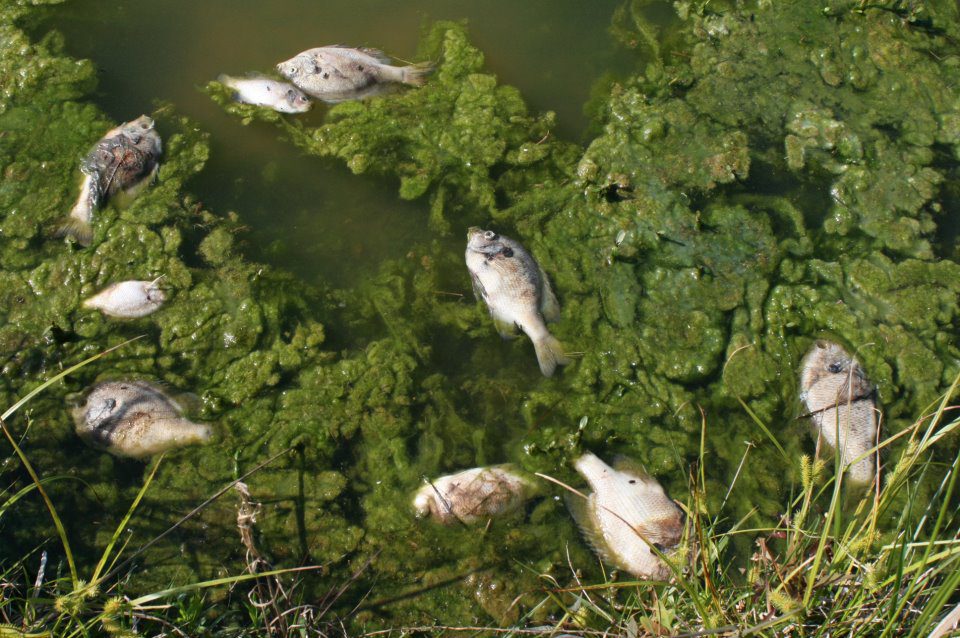
Figure 2. Fish kills related to toxicants are rare and result in the entire fish population (and often other aquatic species such as frogs, turtles, crawfish, etc.) dying at once. Instead, disease or oxygen depletion because of excessive aquatic weed growth or overfertilization are most often to blame.
For concerns related to harmful pesticide residues moving into a water system, there are several things to understand. First, there is not a general test to detect any and all pesticides or foreign chemicals in water or soils. The laboratory needs to have an idea of the chemical or formulations that they will test for. Additionally, some pesticides break down rapidly in water; therefore, the test must be completed as soon as possible. Contact the Alabama Department of Agriculture and Industries Alabama Pesticide Residue Laboratory before submitting a sample and speak with the chemists to see if the scope of the test will provide the needed information. If the test is official and could involve legal action, an inspector might have to visit the site to collect the sample. Finally, pesticide runoff and water contamination are rare as long as pesticides are properly stored and applied because many pesticides bind to soils or are quickly broken down in the environment. Identifying the applicator or source of the runoff may help rule out toxicant-related concerns more quickly and cost effectively.
- Alabama Pesticide Residue Laboratory
- 1001 Wire Road
- Auburn, AL 36832 (334) 844-4712
Private Wells (Non-Potable), Irrigation Systems and Ponds: Water Analysis
The Auburn University Water Testing Laboratory can screen for a suite of micronutrients, macronutrients, and minerals, along with hardness, alkalinity, conductivity, soluble salts, and dissolved solids. These tests will help to answer many water quality–related questions for agricultural, industry, and private use. These include arsenic, aluminum, barium, boron, calcium, chromium, copper, iron, pH, phosphorus, potassium, manganese, magnesium, nickel, nitrate, sodium, sulfate-sulfur, and zinc. Collect at least 500mL/16 ounces of water in a clean plastic bottle and immediately ship or deliver it to the Auburn University Soil, Forage, and water Testing Laboratory. Include the submission form and payment. Payment will vary based on the test being conducted.
- Water Sample Testing Submission Form
- Auburn University Soil, Forage, and Water Testing Laboratory
- (https://aaes.auburn.edu/soil-forage-water-testing-lab/)
- ALFA Building
- 961 S. Donahue Drive
- Auburn University, AL 36849
- (334) 844-3958
Drinking Water: Private Wells
The Centers for Disease Control and Prevention (CDC), Alabama Department of Public Health (ADPH), and Alabama Extension’s Private Well Program recommend testing well water annually for total coliform, fecal coliform, E. coli, nitrate, total dissolved solids, and pH. Additionally, test wells every 2 to 3 years for chloride, fluoride, sulfate, lead, hardness, calcium, copper, iron, and manganese. Even if you know you have a safe water supply, a record of consistent testing establishes the value of your well, which may be helpful if you sell the property or if your well or its water quality are damaged in some way. The county health department or a certified private laboratory are the local resources for annual bacteriological testing. Your water source may require an environmentalist from the health department to collect the sample. Call to receive sampling instructions and testing fee information. All other well water tests must go through an EPA-certified laboratory.
- Alabama Extension Private Well Program (https://www.aces.edu/blog/category/fish-water/fish-water-resources/private-well-program/)
- Alabama Department of Public Health Well Water (https://www.alabamapublichealth.gov/environmental/well-water.html)
- Alabama Department of Environmental Management, Drinking Water Laboratory Certification Program (https://adem.alabama.gov)
Livestock Drinking Water: Wells & Ponds
Livestock water sources should be tested annually. The $30 Total Water Analysis testing package offered by the Auburn University Soil, Forage, and Water Testing Laboratory tests for many parameters of concern to livestock producers. However, coliform and E. coli bacteria also warrant testing as described above. Testing may take place at the drinking area as well as the water source, such as a well. See Alabama Extension publication “Drinking Water for Livestock” at www.aces.edu for acceptable ranges of water quality for livestock.
- Figure 3. Excluding or limiting cattle access to water supplies will greatly improve water quality.
- Figure 4a. The growth in these ponds warrants concern and testing for harmful algae blooms (HABs). Any contact or use of this water should be discontinued pending test results.
- Figure 4b. The growth in these ponds warrants concern and testing for harmful algae blooms (HABs). Any contact or use of this water should be discontinued pending test results.
Harmful Algal Blooms (HABs), Cyanobacteria, Blue-Green Algae: Ponds, Rivers, and Lakes
Some species of planktonic algae, generally termed harmful algal blooms (HABs), are toxic and produce neurotoxins that can harm and even kill humans, livestock, pets, and wildlife even at low concentrations. These often appear on surface waters from mid-summer through early fall across Alabama and the southeast. Their occurrence generally stands out, even to the untrained eye. The bright green, blue, purple, or whitish appearance on the water surface can appear like spilled paint or can coagulate into jellylike masses.
It is recommended that you discontinue all use of the water until the growth is accurately identified, which requires microscopes and equipment found in the School of Fisheries Aquaculture, and Aquatic Sciences at Auburn University. Planktonic algae identification samples may be submitted through www.cyanopros.com, the website of Alan Wilson, Auburn University aquatic ecologist professor, CyanoPros, 203 Swingle Hall, Auburn University, Alabama 36849. Email address: cyanopros@auburn.edu; phone: (334) 246-1120; fax: (334) 844-9208.
 Bence Carter, Regional Extension Agent, and Norm Haley, Regional Extension Agent, both in Forestry, Wildlife, and Natural Resources, Auburn University
Bence Carter, Regional Extension Agent, and Norm Haley, Regional Extension Agent, both in Forestry, Wildlife, and Natural Resources, Auburn University
New February 2024, Water Testing in Alabama: Why, Where & How, FOR-2151


